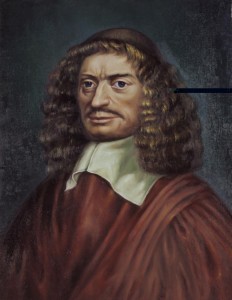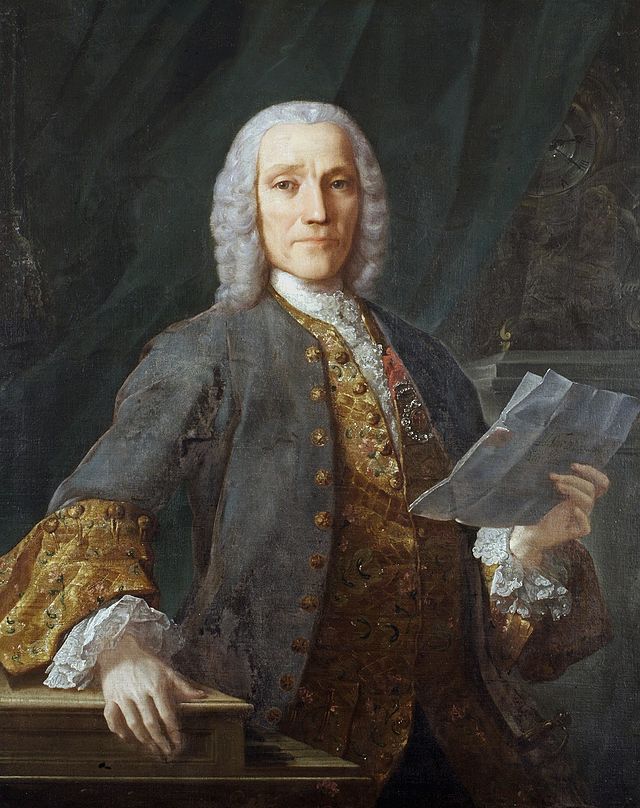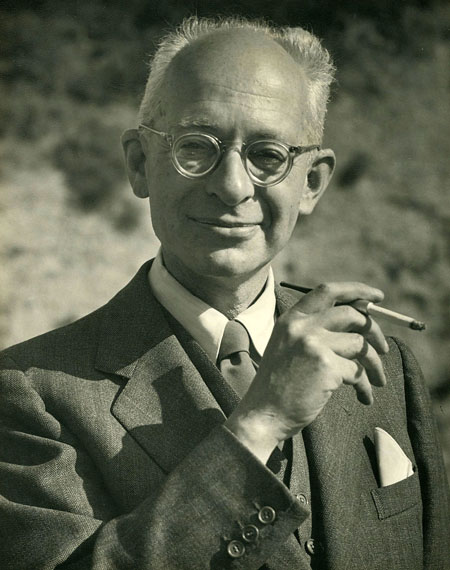Artistic Director Paul Flight leads the 25-voice California Bach Society in Italian works spanning 500 years: Domenico Scarlatti’s newly discovered Messa Breve “La Stella,” Verdi’s Ave Maria, Messa di Requiem by Ildebrando Pizzetti and Mario Castelnuovo-Tedesco’s Romancero Gitano, for choir and solo guitar. Bay Area guitarist Paul Psarras will join the chorus for this program.
Italy can undoubtedly be considered one of the great “incubators” of Western music; its native composers were skilled, and musicians from all over Europe flocked to Italy to learn from these masters, spreading their influence across the continent. Italian innovation in musical scales, harmony, notation, and theatre enabled the development of opera in the late sixteenth century and many other classical forms, such as the symphony and concerto. In this concert, the California Bach Society traces this history through the music of some of its most interesting and influential composers.
We don’t know much about Rossino Mantovano (Rossino of Mantua) other than that he was an alto in the choir of Mantua Cathedral around the beginning of the sixteenth century. His frottola, Lirum bililirum (published in 1505 by Ottaviano Petrucci, the inventor of music printing), is the serenade of a frustrated lover to his elusive lady, made humorous by its use of the Bergamo dialect rather than more classical Italian.

Giacomo Carissimi (1605–1674) was active at the time when secular music was about to overtake the dominance of sacred music in Italy. When he began composing, the influence of the previous generations of Roman composers was still heavy (for instance, the style of Palestrina), and when his career came to a close, operatic forms, as well as instrumental secular forms, were predominant. In addition to composing, Carissimi was important as a teacher, and his influence spread far into Germany and France.
Veni sponsa Christi (Come, bride of Christ) is a six-voice motet with continuo; it opens with a sweetly imitative call from the two highest voices (inviting the bride, who is a symbol for the Church), echoed and amplified as the lower voices join in. A more florid section follows, with a vocal flourish on the word “accipe” dropping through the texture from highest to lowest voice. The final thought is expressed in imitative passages in which nearly every entrance features two voices paired together, gently painting an image of this sacred union of the Church and Christ (the bridegroom).
Giuseppe Domenico Scarlatti (1685–1757) was an Italian composer who spent much of his life in the service of the Portuguese and Spanish royal families. He is classified primarily as a baroque composer, although his music was influential in the development of the Classical Style and he was one of the few baroque composers to transition into the Classical Period. Like his renowned father, Alessandro Scarlatti, he composed in a variety of musical forms, although today he is known mainly for his five hundred fifty-five keyboard sonatas, which were composed after he took up residence in Spain.

Scarlatti wrote the Messa breve, “La Stella” before he left Italy. This “short mass” is scored for two four-part choirs (a solo quartet and the full choir) and continuo. The settings of the Kyrie and the Gloria are in stile misto, a baroque style that mixes the stile antico imitative of Palestrina with a more “contemporary” figured bass continuo. The first “Kyrie eleison” is a straightforward chordal setting, the “Christe eleison” features more linear movement, and the final “Kyrie” is fully contrapuntal. The Gloria creates variety by varying the meter, the number of voices, and the musical texture of each section. The concluding “Cum sancto Spiritu” follows Baroque convention with a contrapuntal conclusion, based on two musical subjects. In the Credo and the following movements Scarlatti returns to the imitative writing of the stile antico. Word painting embellishes the “Descendit de coelis,” “Et incarnatus est,” “Et ascendit in coelum,” and the final contrapuntal “Et vitam venturi saeculi, Amen.” The Sanctus again uses the stile antico, and the Benedictus, which would follow the Elevation, is omitted from this particular Mass. We are utilizing the Benedictus from Scarlatti’s Missa quatuor vocum in its place. After the Benedictus, we have added Scarlatti’s setting of the hymn Iste confessor (which alternates verses between a solo line and a four-part setting), returning to the “La Stella” Mass and its stile antico setting of the Agnus Dei.
Until approximately 1800, it was possible to hear Gregorian chant and Renaissance polyphony—such as the music of Palestrina, Lassus, and others—used during services in Italian churches. However, for most of the nineteenth century a more popular, operatic, and entertaining type of church music was heard, to the exclusion of chant and polyphony. During that century, Giuseppe Verdi (1813–1901) was the dominant Italian opera composer of Europe—yet he had other musical interests and wrote a number of sacred pieces, many of them in full operatic style (most notably, his Requiem).
Late in Verdi’s life, he tackled an interesting project. The enigmatic scale (scala enigmatica) was originally published in a Milan journal as a musical challenge, with an invitation to harmonize it in some way. It is an unusual musical scale, with elements from the major, minor, and whole-tone scales. It lacks a perfect fourth and a perfect fifth above the starting note. Compositions utilizing this scale will sound harmonically unstable. Verdi incorporated this “unnatural scale” in his Ave Maria (1889, revised 1898) in response to that challenge. This Ave Maria has been described as an “almost incomprehensible into-one-another-gliding of harmonies over the entirely ‘unnatural’ scala enigmatica.” The piece features the scale both in its harmonies and as a cantus firmus throughout, laid out in half-note values starting in the bass and then moving through each successively higher voice, with accompanying “queer counterpoint which…is far-fetched and difficult of intonation; the total effect is almost, if not quite, as musical as it is curious” (William Henry Hadow). Verdi did not actually want this work published, as he considered it simply a compositional exercise, but it nevertheless found its way into the compilation Quattro Pezzi Sacri (Four Sacred Pieces) published in 1898.
In the late 19th century, the Cecilian Movement was started by musicians who fought to restore more traditional Church music. The movement reached its apex around 1900 with the ascent of Don Lorenzo Perosi as Perpetual Maestro of the Sistine Chapel and his supporter Pope Pius X. Pope Pius X initiated musical reforms in 1903 when he issued a papal declaration asserting the primacy of Gregorian chant and sacred polyphony that emulated the style of Palestrina’s compositions. In addition, the document discouraged secular and contemporary influences; it disallowed the modification of prescribed texts; and it barred the use of the piano and “noisy or frivolous instruments such as drums, cymbals [and] bells.” From this time onwards, a recurrent feature of Italian sacred music included elements of historicism and, in particular, a compositional interest in chant and Renaissance polyphony.
Ildebrando Pizzetti (1880–1968) wrote his Messa di Requiem in 1922–1923. It is a prime example of his ability to combine contrapuntal techniques, neo-Romantic harmonies, and varied textures. This Requiem Mass setting reveals Pizzetti’s own conservative approach to composition, techniques that align it with the musical principles outlined in Pope Pius X’s 1903 directive. Although the compositional approach is conservative, Pizzetti’s youthful predilection for theatrical works (he wrote a number of operas in his early years) also manifests itself. The expression markings are plentiful and specific, the dynamic range is quite wide, and the structure of the piece seems sometimes to imply acts and scenes. The dramatic expression also arises from his personal connection with the Requiem text following the death of his first wife, as this work was composed during the interval between her death and his subsequent remarriage.
The Introit and Kyrie texts are linked in a single movement with a slight, silent separation between the two texts. The composer does not directly quote a plainchant melody in this movement, yet it sounds as though it does because the lines are written with the modal melodic contours of plainchant. The Dies irae features the plainchant sequence melody, starting with exact quotations in octaves in the alto and bass voices. The chant melody is set more freely at “Quantus tremor” by the addition of extra notes that agitate the chant line, in order to depict “trembling.” The only word added to the original text is the sighing melisma on “oh” that reflects and amplifies the anxiety of the text at certain points.

In Italy during the Fascist era, political pressure stymied the development of classical music, although censorship was not as systematic as in Nazi Germany. A series of “racial laws,” passed in 1938, denied to Jewish composers and musicians membership in professional and artistic associations. Although there was not a massive flight of Italian Jews from Italy during this period (compared to Germany), composer Mario Castelnuovo-Tedesco (1895–1968), an Italian Jew, (ironically, a descendant of Spanish Jews who fled Spain in the 15th century), was one of those who emigrated. He arrived in the United States in 1939, and became a film composer for MGM Studios for the next fifteen years. He tended to downplay his Hollywood career later in life, yet it is fascinating to note that he was not only a student of Pizzetti in Italy, but was also the composition teacher of John Williams and Jerry Goldsmith, two pre-eminent film composers of recent times.
Castelnuovo-Tedesco was best known as one of the foremost guitar composers in the twentieth century with almost one hundred compositions for that instrument. So it is no surprise that this instrument plays a prominent role in his Romancero Gitano, a setting of poems by Federico García Lorca. The six movements performed here feature Spanish-influenced dance rhythms and vocal lines—expressing the pains and joys of love, life, dance, and music—that connect the composer back to his ancient Spanish roots.
SFEMS members receive a $5 discount on the advance purchase price when using promotion code “SFEMS” until 5:00 p.m. on Thursday, April 23. Order by phone at 650-485-1097 or online at www.calbach.org/tickets.pl.
Performances are 8:00 p.m., Friday, April 24, at St. Mark’s Lutheran Church in San Francisco; 8:00 p.m., Saturday, April 25, at All Saints’ Episcopal Church in Palo Alto; and at 4:00 p.m., Sunday, April 26, at St. Mark’s Episcopal Church in Berkeley. General tickets are $28 in advance, or $33 at the door; senior tickets: $20 in advance or $24 at the door. Students and patrons under 30 always pay $10.












